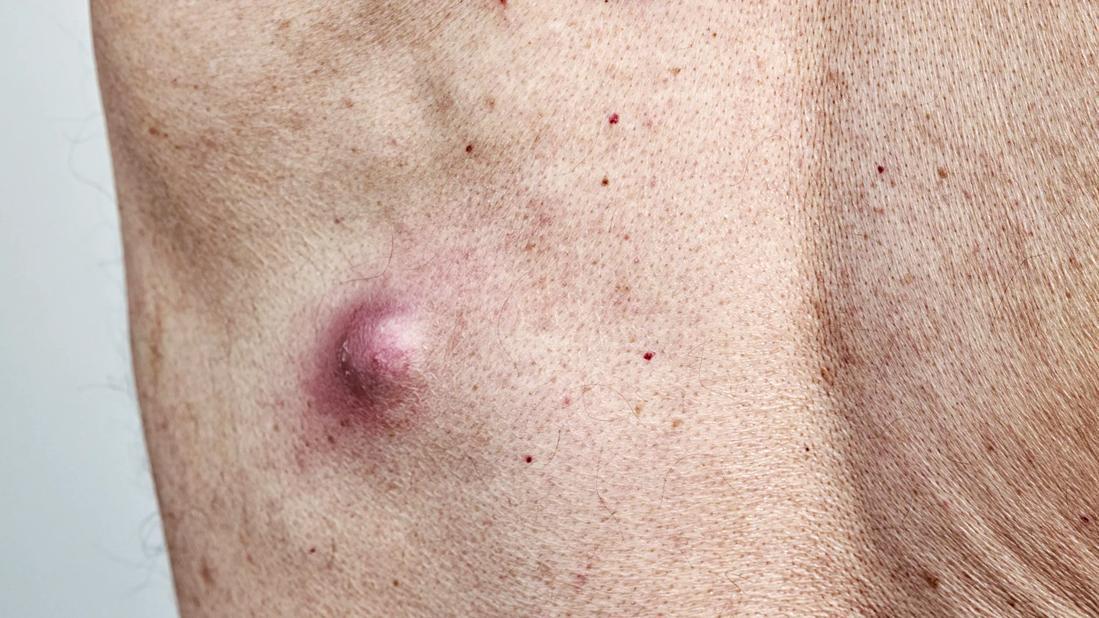Should You Worry About the Lump Under Your Skin?
If it’s soft, movable, near the surface and not painful, you’re probably OK — but see a healthcare provider if you’re concerned

Finding a new lump under your skin would give most of us pause. And if your mind immediately jumps to cancer, you’re not alone. After all, a lump can, in rare cases, mean cancer.
But not every lump is a worst-case scenario.
When to worry about a lump under your skin
Anything new is always a concern, especially if it’s causing pain or disrupting your ability to go through daily life without difficulty, stress or worry.
To get a better understanding of when a lump is worth talking to a healthcare provider, we spoke with orthopaedic oncologist surgeon Nathan Mesko, MD.
Concerning characteristics to look for
The majority of lumps are harmless and no cause for worry.
“Most lumps turn out to be harmless, but it’s always smart to get them checked,” clarifies Dr. Mesko. “Checking something early — just in case — can make all the difference.”
Some signs and changes are worth closer examination, including:
- Pain
- Bleeding
- Redness or warmth
- Swelling
- Hardness or stiffness
- Open sores
- Rapid growth or change in appearance
- Lasting several weeks
- Appearing on the breasts or testicles
Cancerous lumps can form almost anywhere in your body. For example, adult soft tissue sarcoma can appear in the soft tissues of your body, including your:
- Muscles
- Tendons
- Fat
- Blood vessels
- Lymph vessels
- Nerves
- Tissues around your joints
Most frequently, adult soft tissue sarcoma develops in your legs, arms, chest or the area behind your abdomen called the retroperitoneum. This type of cancer is rare, representing less than 1% of all cancers.
“Adult soft tissue sarcoma is a disease where malignant cells form in the soft tissues of the body,” explains Dr. Mesko. “Soft tissue sarcomas can grow to be quite large before causing symptoms because they’re often embedded deep in the body.”
When to go to the doctor right away
Talk with a healthcare provider about any lump that’s larger than 2 inches (about the size of a golf ball), grows larger or is painful. That goes for any lump, anywhere. Lumps on testicles or breasts should always be examined by a provider.
Cancerous lumps typically start small and become large and hard. They generally start as painless and appear in random locations. The lump will usually grow in size steadily over weeks or months.
“If you notice any new or growing bumps under your skin, or if it feels hard, it could be cancerous,” says Dr. Mesko. “Redness, swelling and pain could be signs of an infection. These are all good reasons to make an appointment with your doctor.”
Soft tissue sarcomas feel like hard lumps, which may be painful. If the tumor is in your abdomen, it may make you feel nauseated or full. If you experience these symptoms or notice a new lump that’s causing you pain, again, have it looked at by a healthcare provider.
“Tell your doctor about new lumps or other symptoms that can’t be explained or that don’t go away in a few weeks,” he advises.
Lumps you don’t have to worry about
There are plenty of medical conditions and other reasons that cause bumps under your skin. In general, lumps aren’t usually concerning if they’re:
- Soft and movable
- Shrinking or going away within a few weeks
- Located in the superficial or fat layer of skin
- Not changing in size or appearance
- Not located on breasts or testicles
“One major marker is if you can connect the lump’s appearance to a specific trauma or activity,” says Dr. Mesko. “Athletes of all levels experience the occasional bump as a result of exercise, training, competition or other physical activity.”
In those cases, it’s best to follow the RICE method: rest, ice, compression and elevation. “If over time, the lump or swelling improves, that’s a reassuring sign that it’s harmless and nothing to worry about,” he adds.
At the end of the day, lumps can occur for any number of reasons — from noncancerous cysts and acne to an injury, or as a result of other conditions, like tendonitis or rheumatoid arthritis. If you’re ever concerned about symptoms or have questions about anything that surfaces on your body, it’s worth bringing it to a doctor, even if it’s not a serious lump.
“If you notice anything new or concerning, you don’t want to ignore it or assume it’s nothing to worry about,” reiterates Dr. Mesko. “We’re here to help identify what’s happening so that we can provide the right kind of treatment for any scenario.”